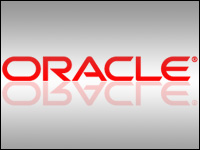
This week, I interviewed a small business owner who told me a very interesting story. He’d done some planning before implementing his CRM solution, and his new technology took rapid care of the problems he anticipated.
After that, however, he started finding new problems — which he then found solutions for within his CRM system. As he climbed the CRM learning curve, he also began discovering new capabilities within CRM — time-stamping leads, lead sources, and so on — that he’d never even considered before. Now, he looks forward to implementing more functionality and getting more employees to learn about the system so he can apply the technology to solving problems he may have overlooked.
What’s been the secret to this pattern of expanding utilization? Mostly, it’s been a state of mind. “That whole progression is not part of a plan,” he said. “It’s more part of just working through it and keeping an open mind.”
I would also suggest this: This user, and others who succeed in maximizing their CRM investment, have an intrinsic understanding that CRM is not something you are ever done with. As newcomers to the technology, they’re constantly looking for new ways to use the technology and to fine-tune their processes for using it. They’re constantly reminded that CRM is always a work in progress, not something you can set and forget.
If It Ain’t Broke?
How many established users of CRM maintain this attitude? The more complex your processes become, the harder it is to consider changes, since the ripple effect of those changes means an increasing amount of work in managing the solution as a whole.
From a managerial point of view, employees don’t win promotions for telling the boss that their project will never be completed. As a result, when a CRM application is brought into a business and addresses the problems that triggered its implementation, that tends to be the end of the investment of effort until the pain of ineffective processes forces the issue.
Another issue is that, perversely, success hampers future success, since there’s far less motivation to mess with a successful set of processes than there is to tinker with processes that are tanking. The result can be complacency and a reinforcement of that natural tendency to avoid change.
Still, as we all know (or ought to, at least), the customer is constantly changing. That creates new issues for your sales force, your marketing department and your service team. In all too many cases, the initial impulse is to view the negative effects of these changes as evidence that your CRM technology isn’t working, and to start to look for new solutions, new technology, and new vendors.
Thinking It Through
The reality, in a great many cases, is not that the technology is not working — it’s the thinking that’s not working. Going out and buying a new solution is an easy out. Stepping back, understanding the new issues your business faces and then mapping those features to your existing solution requires more mental effort, but it’s cheaper and more effective in the long run.
Not only do you not have to buy and integrate a new product, but your staff will take less time to learn to use the technology for new processes than it would if it had to learn those processes on a new CRM platform.
Better still is to constantly maintain the attitude that my interview subject personified. If you’re managing a CRM effort — regardless of the scale — you should always be in discovery mode.
That means learning about what your CRM technology is capable of, of course, but it also means learning about processes in the company. By understanding how your CRM technology works in depth — and also understanding which of your processes are not working — you can serve as a matchmaker and quickly get them in sync.
CRM Buyer columnist Chris Bucholtz blogs about CRM at Forecasting Clouds. He has been a technology journalist for 15 years and has immersed himself in the world of CRM since 2006. When he’s not wearing his business and technology geek hat, he’s wearing his airplane geek hat; he’s written two books on World War II aviation, and his next two are slated for publication in 2010.























































